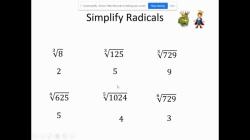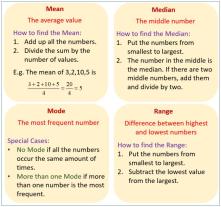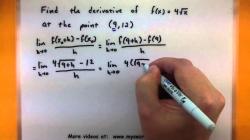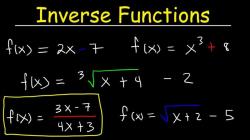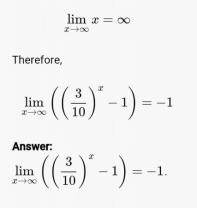How do you find the simplest radical form?
Finding the simplest radical form of a square root involves simplifying the expression under the radical symbol (the radicand) by factoring it into its prime factors and then extracting the square roots of perfect squares. Here's a step-by-step guide on how to find the simplest radical form:
Identify the Radicand:
- Identify the expression under the square root symbol (the radicand) that you want to simplify.
Prime Factorization:
- Factor the radicand into its prime factors. Break down the radicand into a product of prime numbers. For example, if you have √72, you would factor 72 into its prime factors: 72 = 2 * 2 * 2 * 3 * 3.
Group Perfect Squares:
- Group the prime factors in pairs to create perfect squares. In the case of √72, you can group the prime factors as (2 * 2) * (3 * 3). These are the perfect squares within the radicand.
Simplify the Perfect Squares:
- Take the square root of each perfect square group. In this case, √(2 * 2) is 2, and √(3 * 3) is 3.
Combine the Square Roots:
- Multiply the square roots of the perfect squares together. In the example of √72, you have √(2 * 2) * √(3 * 3), which simplifies to 2 * 3, or 6.
Write the Simplest Radical Form:
- The simplest radical form is the result you obtained in the previous step. In this case, the simplest radical form of √72 is 6.
Let's illustrate this process with a few more examples:
√32:
- Prime factorization: 32 = 2 * 2 * 2 * 2 * 2.
- Group into perfect squares: (2 * 2) * (2 * 2) * 2.
- Simplify the perfect squares: √(2 * 2) is 2.
- Combine the square roots: 2 * 2 * √2 = 4√2.
- The simplest radical form of √32 is 4√2.
√45:
- Prime factorization: 45 = 3 * 3 * 5.
- Group into perfect squares: (3 * 3) * 5.
- Simplify the perfect squares: √(3 * 3) is 3.
- Combine the square roots: 3 * √5.
- The simplest radical form of √45 is 3√5.
By following these steps, you can find the simplest radical form of square roots and simplify them into a more compact and manageable expression.
Sure, here is a guide on simplifying radicals:
Simplifying Radicals: Step-by-Step Guide
Simplifying radicals involves expressing a radical in its simplest form, where the radicand (the number under the radical symbol) has no perfect square factors. This process helps simplify expressions, reduce computations, and make mathematical operations more manageable.
1. Identify Perfect Square Factors:
Start by analyzing the radicand (the number under the radical symbol) to identify any perfect square factors. A perfect square is a number that can be obtained by squaring an integer. For example, 4 is a perfect square because 2 x 2 = 4.
2. Factor Out Perfect Square Factors:
If the radicand contains perfect square factors, factor them out and place them outside the radical symbol. The remaining number inside the radical symbol should have no perfect square factors.
3. Simplify the Radicand:
If the radicand after factoring out perfect squares is still a composite number (a number with more than two factors), continue to factor it into its prime factors. If the radicand is a prime number (a number with exactly two factors: 1 and itself), it is already in its simplest form.
4. Apply Radical Rules:
Remember that the radical symbol applies to each term separately when the radicand is a product of multiple factors.
Techniques for Finding the Simplest Radical Form
Factorization: Break down the radicand into its prime factorization to identify perfect square factors.
Common Factors: Look for common factors among the terms of the radicand to simplify the expression before applying radical simplification.
Rationalize the Denominator: If the radical is in the denominator of a fraction, consider rationalizing the denominator to eliminate radicals from the denominator.
Common Radical Simplification Examples
- Simplify √32:
√32 = √(16 × 2) = 4√2
- Simplify √18:
√18 = √(9 × 2) = 3√2
- Simplify √75:
√75 = √(25 × 3) = 5√3
Practice Exercises for Radicals and Simplest Form
Simplify √98
Simplify √50
Simplify √200
Simplify √128
Simplify √288
The Importance of Radicals in Mathematics
Radicals play a crucial role in various mathematical concepts and applications, including:
Geometry: Radicals are used to express lengths, areas, and volumes of geometric figures, especially those involving circles, triangles, and polygons.
Algebraic Expressions: Radicals simplify complex algebraic expressions and allow for manipulation and solution of equations involving irrational numbers.
Calculus: Radicals are essential in understanding and applying concepts of differential calculus, particularly when dealing with derivatives and integrals of radical functions.
Physics and Engineering: Radicals are used in various physical and engineering applications, such as calculating wave propagation, analyzing electrical circuits, and modeling mechanical systems.
Statistics and Probability: Radicals appear in statistical measures like standard deviation and probability distributions, providing insights into data variability and chance outcomes.








